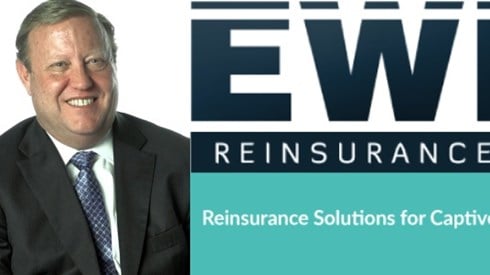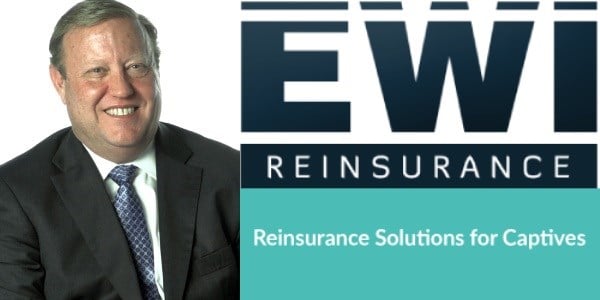How To Optimize a Captive Insurance Company

Steve McElhiney | September 06, 2017

The following framework introduces a single-parent captive insurance company, walks through a time-tested approach for successful captive optimization, and overlays this approach with key success factors that may be integrated to achieve long-term economic value and superior risk control attributes.
Captive Insurer Background
The following discussion relates to a 30-year Vermont single-parent captive that is part of a global Fortune 1000 conglomerate based in Texas with operating units based in North America and the European Union. The underlying business units are involved in the chemicals, specialty steel, industrial manufacturing, and mining market segments. By their nature, these business segments present unusual risk exposures and a high inherent level of risk for both frequency- and severity-type events involving property and casualty exposures.
The captive is rated by A.M. Best and is currently used only as respects the global property (with appropriate loss limits based on a number of factors including business operations, modeling, engineering analysis, and actuarial studies) and global casualty needs of the parent company. There is no material nonaffiliated business in the captive currently, and a 100 percent reinsurance strategy is utilized for both of these placements. The captive solely utilizes a panel of highly rated and Vermont Department of Financial Regulation-approved global reinsurers representing the largest and most financially secure groups available.
Over the long-term track record of the captive, the sponsor (parent company) has been able to achieve a number of coverage enhancements over time and the captive has produced over $25 million in economic value over this period from its favorable underwriting track record.
The captive has taken a US taxpayer election since its inception and provides no additional tax advantages to the owner than would a traditional insurance program. The genesis and focus of this captive is a pure risk management one, rather than a financial, investment, or tax focus. This strategy and philosophy have been a critical success factor for the captive.
This captive is internally staffed by a team of highly qualified career insurance and risk professionals who manage the captive according to "best practices" protocols and procedures that are utilized by insurers. Internal staffing is supplemented with a number of industry-respected service providers (e.g., captive manager, actuary, investment adviser, reinsurance intermediary, and a Big 4 accounting firm). The captive operates under strict control guidelines and has active board oversight.
How It Works
How does your captive provide coverages needed for the particular business?
Given the investment that has been undertaken in this captive vehicle, it is our overarching philosophy to utilize this tool as broadly as possible in our overall risk transfer program. Thus, we tend to approach each renewal as if it is a "fresh piece" of paper. We look at market conditions as to whether we wish to access the traditional primary market or to change our retention strategy relative to the 100 percent reinsurance programs that are currently in place. This may be a function of market conditions and varying appetites by insurers or reinsurers.
We utilize two manuscripted global policies for all controlled affiliate business entities and units within the consolidated group. These manuscripted policies often provide for broader protections or lower deductibles or higher sublimits than what might be found in a traditional commercial insurance program.
It has been our experience that global reinsurers tend to have a broader appetite for some of our risk exposures than would traditional insurers on a primary basis. This coverage enhancement feature has had an incalculable value to our organization over the past 30 years as certain risk incidents have been "covered" (and supported by reinsurers) that would not have been in a traditional program.
Given our conglomerate business model, we are often misclassified by traditional insurers who view the organization as a "chemical company" rather than an industrial conglomerate with a focus on a highly benign and low risk profile chemical product. In this context, we would be subjected to coverage limitations intended for more petroleum-based chemical manufacturers in a traditional program.
As indicated, we currently provide a global property policy and a global casualty policy through the captive. A variety of exposures are insured, traditionally, outside of the captive. These include primary general liability and workers compensation as well as all management liability programs. We feel we are well served by utilizing a combination of traditional commercial insurers and policies as well as our captive-focused manuscripted policies.
How does your captive save money on insurance for its single-parent owner?
All other things held equal, there is a minimal cost savings that arises from accessing the reinsurance market directly versus commercial insurance. Assuming identical loss costs, reinsurers may have a 1 to 2 percent cost advantage over traditional commercial insurers due to lower operating expenses.
More so, the financial advantages that we enjoy from our captive arise from the economies of scale that are achieved by buying cover for a variety of entities in one consolidated purchase via our global programs and the streamlined deductibles as well as the reduced administrative burden that presents. Also, as previously mentioned, the broader coverage enhancements afforded under a fully reinsured program provide an additional and incalculable economic value to our organization.
For a single-parent captive such as ours, the key economic drivers for profitability over time have been the retention of profitable underwriting results coupled with the investment returns garnered on loss reserves. This value accretion, over a long term (like our 30-year experience), has produced substantial economic value to the organization. Much of this value would have inured to traditional insurance companies had we not formed a captive. In addition, it is our strong position that a captive vehicle heightens the risk management process within a complex organization and that this continuous cycle tends to drive better loss results over time.
How does your captive create competition for commercial insurers so that they reduce their prices and offer better coverage?
We do not see much of a nexus on this issue. Many of the insurance counterparties that we utilize in reinsuring our captive program are also large primary insurers. For example, we utilize Allianz, XL Catlin, and Chubb as reinsurers of our programs. All of these insurers would also be available to insure our needs on a traditional primary basis, albeit through different profit centers. Our captive utilization provides them with another portal to access our business to facilitate risk tailoring.
Thus, we do not necessarily see the captive space as being a strong competitor to traditional markets. Rather, an alternative risk program simply provides another platform for commercial insurers to see the same risks in a different structural form. Our business continues to be syndicated in the global insurance market, with the addition of some new risk counterparties in Bermuda, the United Kingdom, and the European Union that would not be involved in a traditional insurance program.
What, if any, coverages are provided by your captive that are not available or are cost-prohibitive in the commercial market?
It has been our experience that there are no coverages that we need that are not available in the commercial market. Rather, our model, reinsurance of a manuscripted policy, provides some subtle coverage enhancements to traditional commercial covers through endorsements and other such approaches. Further, we have been able to gain coverage for mine exposures with this approach, an exposure usually viewed critically by most traditional insurers.
How does your captive help risk management?
The success that we have enjoyed with our captive is a result of our core focus on risk management and control. A captive is an evolution in an overall risk management process and provides the vehicle for the assumption of risk and more advanced risk transfer mechanisms. Clearly, the overall success of a captive is dependent on better-than-average risk and loss outcomes over time.
A captive fosters the heightened organization awareness and focus needed to reduce the frequency and to mitigate the severity of claim events. The profits that are earned in the captive help to lower the overall organizational "cost of risk" metric as an offset to claims and other risk-related expenses.
We feel our captive has provided an organizational profit center to capture risk expenses and overall outcomes and a centralized means to drive improved risk and safety processes through disparate business units, given our conglomerate holding company model.
How does your captive create surplus over time so that it can take on more of its parent owner's risk?
Over the 30 years of our captive, we have enjoyed a more than 12 percent compounded annual growth rate (net of dividends) in capital accretion through the retention of underwriting profits and the investment income earned on loss reserves. This value accretion has served to grow our net risk-bearing capacity tremendously, and it provides a buffer to allow us to entertain larger risk retentions should extreme "hard market" conditions resurface.
The Keys to Success
Based on the foregoing discussion points, a variety of key success factors are necessary for the ongoing optimization of a single-parent captive vehicle, as follows.
- Recognition that a captive is a long-term foray into the insurance risk-bearing sector. It
is imperative that such a captive be operated as a prototypical insurance company with the
following key attributes:
- well-delineated mission, purpose, and operational plans in place;
- active and vibrant board oversight;
- a well-defined and appropriate underwriting approach relative to the level of capital in place and in view of potential risks; and
- a focus, exclusively, on the captive as first and foremost a risk management and long-term insurance-regulated entity. It needs to be operated in an appropriate manner to ensure that solvency is maintained and that risks are well understood and mitigated, using reinsurance as needed. A captive that is focused solely on the tax attributes, or one that takes undue investment risk or retains poorly analyzed and priced risks, has a high likelihood of failure.
- Benefits of tailored coverages
- Our key to success over time has emanated from having customized coverage provided by the captive. Thus, broadened protection is provided vis-à-vis traditional fully insured solutions. In other words, the "magic" of manuscripting coverage is a key factor.
- Long-term partnering relationships
- Fundamentally, reinsurance should be utilized in a long-term partnering approach. Reinsurance should be purchased for reasons beyond capacity but more so as a means to utilize your panel in a manner that improves the degree of protection generally as well as the risk culture.
- Likewise, long-term relationships with various other service providers (e.g., third-party administrators, captive managers, investment advisers, actuaries) work best when viewed with a long-term partnering prism.
- Application of "insurance operator" philosophies, strategies, and practices, such as the following.
- Running a captive as a prototypical "A" rated entity with the guidelines in place suggested by A.M. Best and others
- Having a sound analytical understanding of the drivers of loss and the risk/return trade-off associated with retained risk given the inherently limited capital of a captive
- Utilizing reinsurance as needed to mitigate risks and protect solvency and minimize volatility
- Establishing a rigorous and thorough oversight process as provided by an involved board and captive manager
Taken together, we feel that a captive—when operated in a manner suggested in this article—will invariably be highly successful and a long-term generator of economic value and superior risk control attributes.
Steve McElhiney | September 06, 2017